Z-Scores Standardization And The Standard Normal Distribution
In this article, we’ll be learning about Z-Scores Standardization And The Standard Normal Distribution by learning about both of these topics you will learn how to calculate exact proportions using the standard normal distribution.
What is the standard normal distribution?
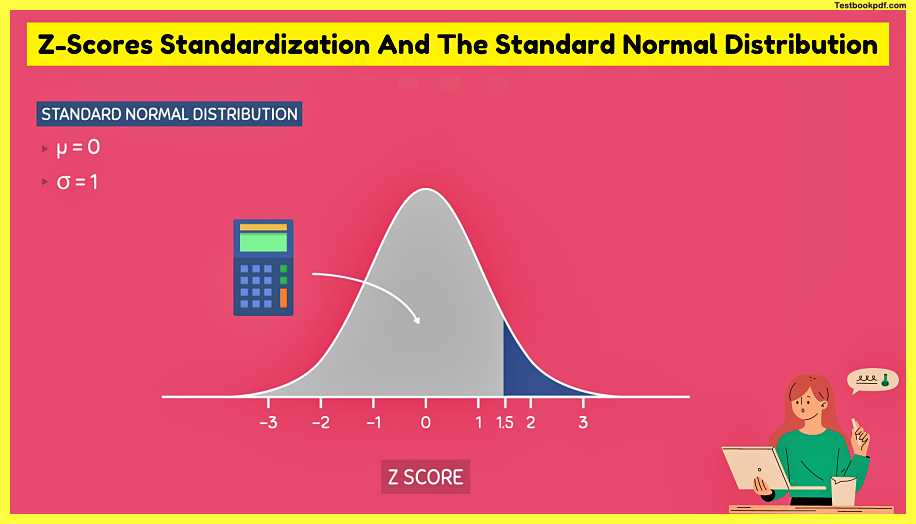
The standard normal distribution is a special type of normal distribution that has a mean of 0 and a standard deviation of 1 because of this the standard normal distribution is always centered at 0 and has intervals that increase by 1, each number on the horizontal axis corresponds to a z-score as Z-Scores tells us how many standard deviations an observation is from the mean mu
For example, a z-score of negative 2 tells me that I am 2 standard deviations to the left of the mean and a score of 1.5 tells me that I am one and a half standard deviations to the right of the mean most importantly a set score allows us to calculate how much area that specific z-score is associated with.
What is Z-Score?
A z-score is a statistical measure of how much something deviates from the average. In the case of cannabis, we use it to determine if a strain is underperforming or overperforming compared to its peers. A high score means that the strain is doing well while a low score indicates that the strain is not performing as expected.
The z-score is calculated using the following formula: (x – mean) / standard deviation.
- Where x is the value being measured
- Mean the average value of the data set
- Standard deviation is the amount of variation in the data set
For example, if the average weight of a group of people is 70 kg and the standard deviation is 10 kg, then a person who weighs 75 kg would have a z-score of 0.75. If he weighed 65 kg, his z-score would be -0.65.
What is a Z-Score Table?
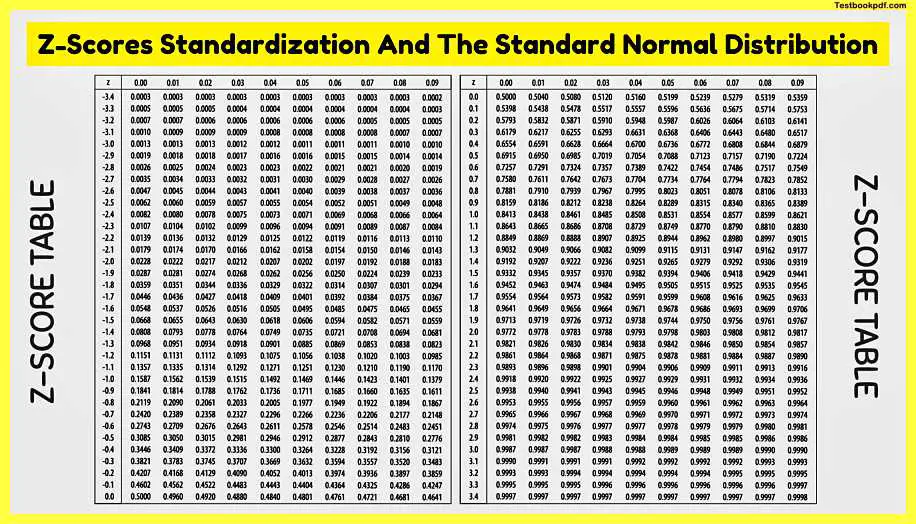
We can find out that exact area using something called a z-score table also known as the standard normal table this table tells us the total amount of area contained to the left side of any value of Z for this table the top row and the first column correspond to Z values and all the numbers in the middle correspond to areas.
For example, according to the table, a z-score of negative 1 point 9 5 has an area of 0.025 6 to the left of it to say this in a more formal manner we can say that the proportion of Z less than negative one point nine five is equal to 0.025 6
Calculating the area to the right of a Z-Score
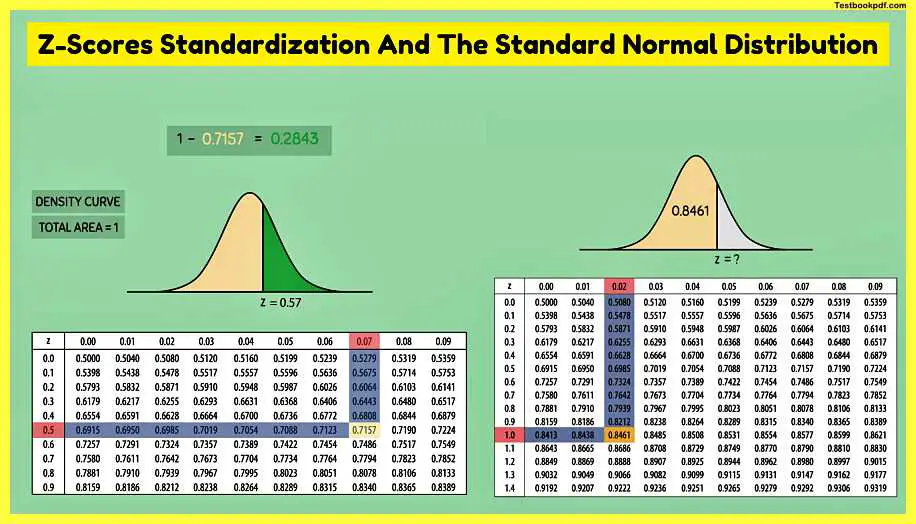
We can also use the standard normal table to determine the area to the right of any Z value all we have to do is take 1 minus the area that corresponds to that value
For example, to determine the area to the right of a z-score of 0.57 all we have to do is find the area that corresponds to this set value and then subtracted from 1 according to the table the z-score of 0.57 has an area of 0.7 157 to the left of it so 1 minus 0.7 157 gives us an area of 0.28 43 and that is our answer the reason why we can do this is that we have to remember that the normal distribution is a density curve and it always has a total area equal to 1 or 100%
Reverse Lookup
You can also use the set score table to do a reverse look-up which means you can use the table to see what that score is associated with a specific area so if I wanted to know what value of Z corresponds to an area of 0.8 four six one to the left of it all we have to do is find 0.8461 on the table and see what value is that it corresponds to we see that it corresponds to a set value of 1.02
Standardization
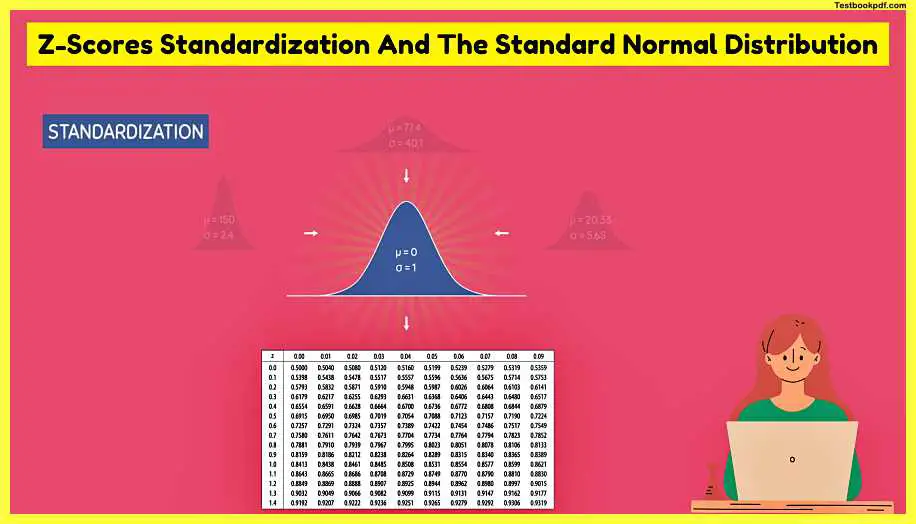
The special thing about the standard normal distribution is that any type of normal distribution can be transformed into it in other words any normal distribution with any value of mu and Sigma (μ or σ) can be transformed into the standard normal distribution where you have a mean of 0 and a standard deviation of one this conversion process is called standardization the benefit of standardization is that it allows us to use the set score table to calculate exact areas for any given normally distributed population with any value of mu or Sigma ((μ or σ) ) standardization involves using this formula, this formula says that the z-score is equal to an observation X minus the population means mu (μ) divided by the population standard deviation Sigma.
so suppose that we gather data from last year’s final chemistry exam and found that it followed a normal distribution with a mean of 60 and a standard deviation of 10.
Practice Question #1
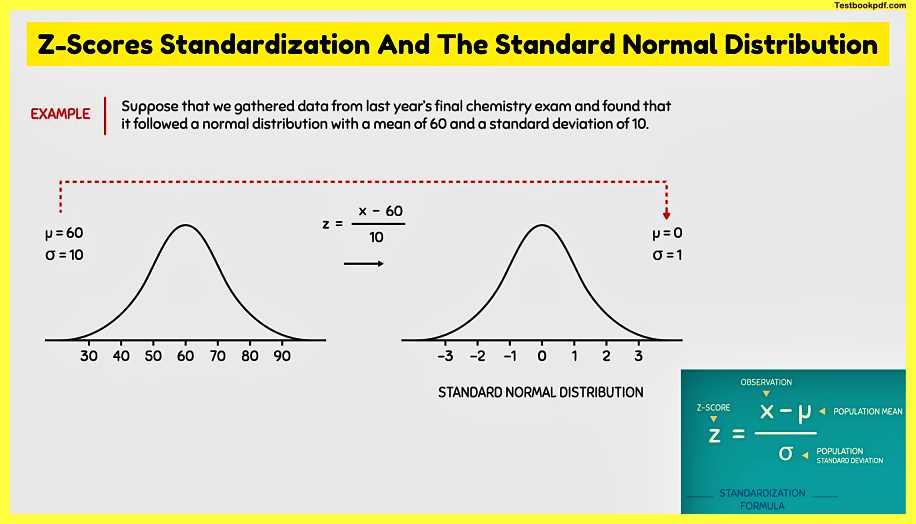
If we were to draw this normal distribution we would have 60 located at the center of the distribution because it is the value of the mean and each interval would increase by 10 since that is the value of the standard deviation to convert this distribution to the standard normal distribution we will use the formula the value of MU (μ) is equal to 60 and the value of Sigma is equal to 10 we can then take each value of x and plug it into the equation if I plug in 60 I will get a value of 0 if I plug in 50 I will get a value of negative 1 if I plug in 40 I will get a value of negative 2 if we do this for each value you can see that we end up with the same values as a standard normal distribution when doing this conversion process the mean of the normal distribution will always be converted to 0 and the standard deviation will always correspond to a value of 1 it’s important to remember that this will happen with any normal distribution no matter what value of MU (μ) and sick are.
Practice Question #2
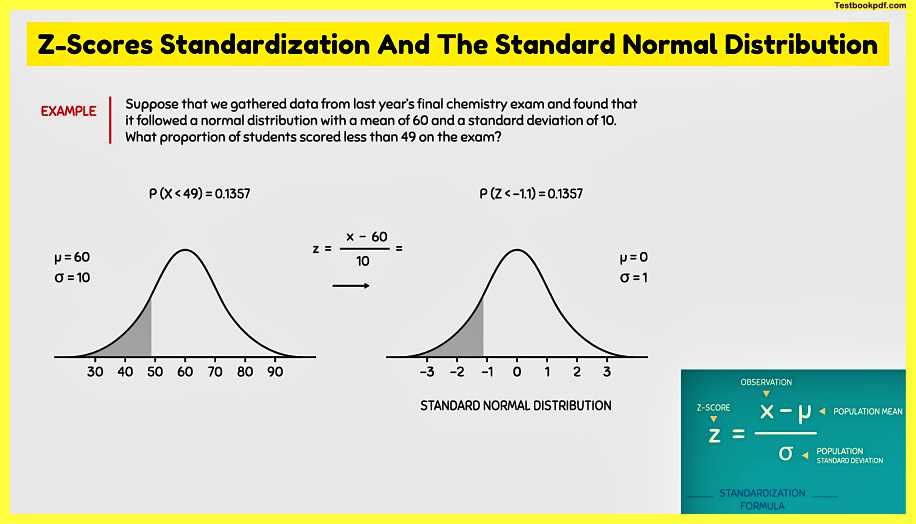
Now if I asked you what proportion of students score less than 49 on the exam it is this area that we are interested in however the proportion of X less than 49 is unknown until we use the standardization formula after plugging in 49 into this formula we end up with a value of negative 1.1, as a result, we will be looking for the proportion of Zed less than negative 1.1 and finally, we can use the z-score table to determine how much area is associated with his Zed score according to the table there’s an area of 0.1 3 5 7 to the left of this set value this means that the proportion of Zed less than negative 1.1 is0.1357 this value is in fact the same proportion of individuals that scored less than 49 on the exam, as a result, this is the answer.
Practice Question #3
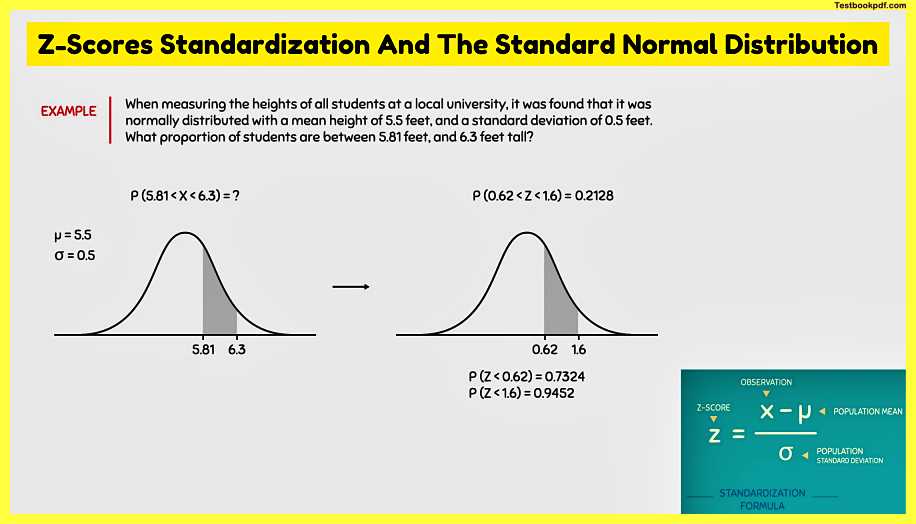
Let’s do one more example when measuring the heights of all students at a local university it was found that it was normally distributed with a mean height of 5.5 feet and a standard deviation of 0.5 feet what proportion of students are between five point eight one feet and 6.3 feet tall before we solve this question it’s always a good habit to first write down important information so we have a meal of 5.5 feet and a sigma of 0.5 feet we are also looking for the proportion of individuals between 5.8 one feet and 6.3 feet tall this corresponds to this highlighted area to determine this area we need to standardize the distribution so we will use the standardization formula plugging in 5.8 went to this formula gives us a Zed square of 0.62 and plugging in 6.3 into the formula gives us a z-score of 1.6 according to the standard normal table the z-score of 0.62 corresponds to an area of 0.7 3 to 4 and the z-score of 1.6 corresponds to an area of 0.945 2 to find the proportion of values between 0.62 and 1.6 we must subtract the smaller area from the bigger area so 0.945 2 minus 0.7 3 to 4 gives us 0.2128 as a result the proportion of students between 5.8 one feet and 6.3 feet tall is 0.2128



